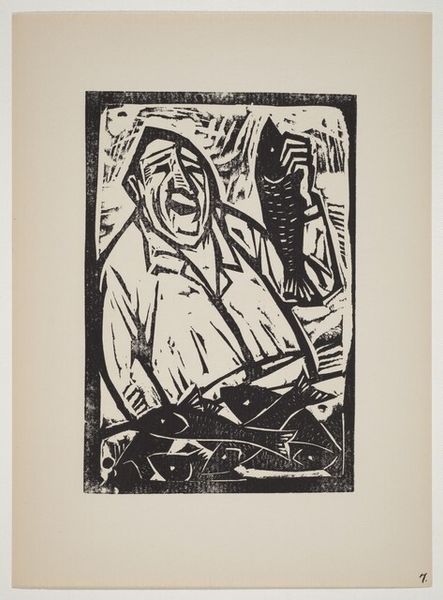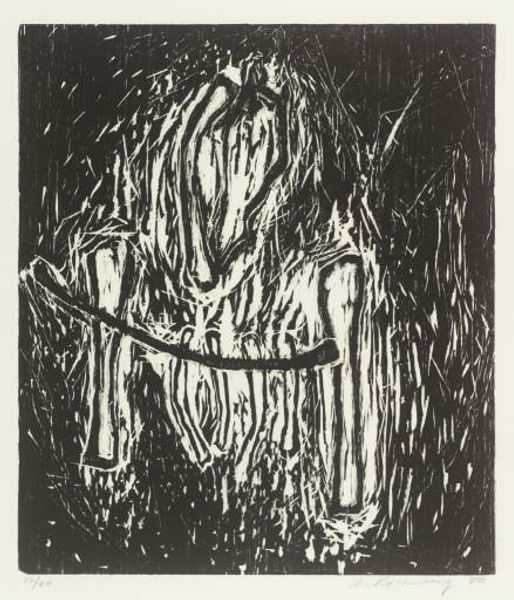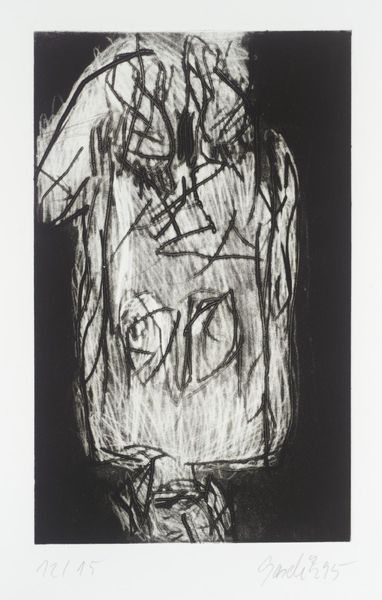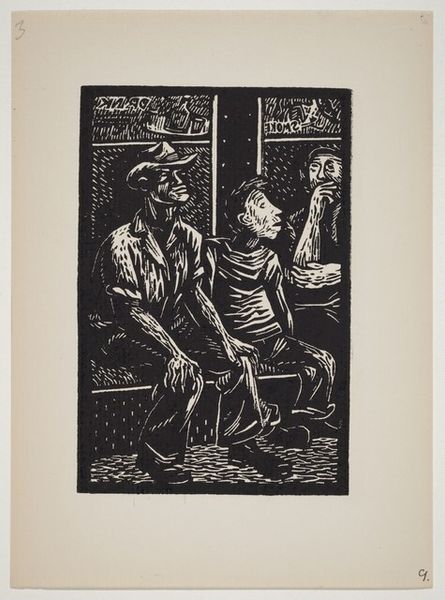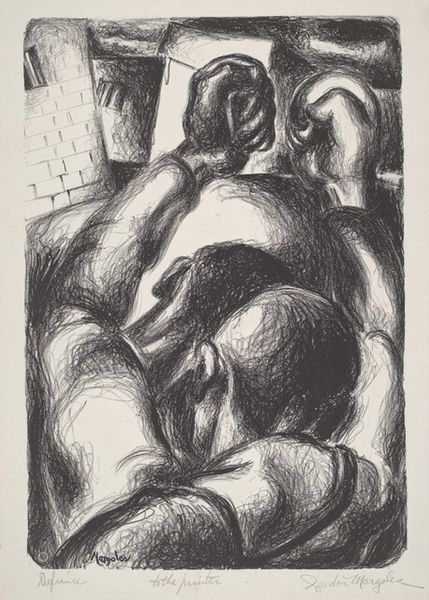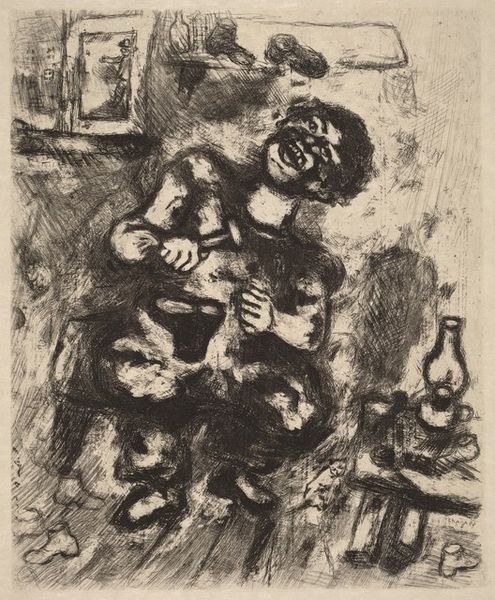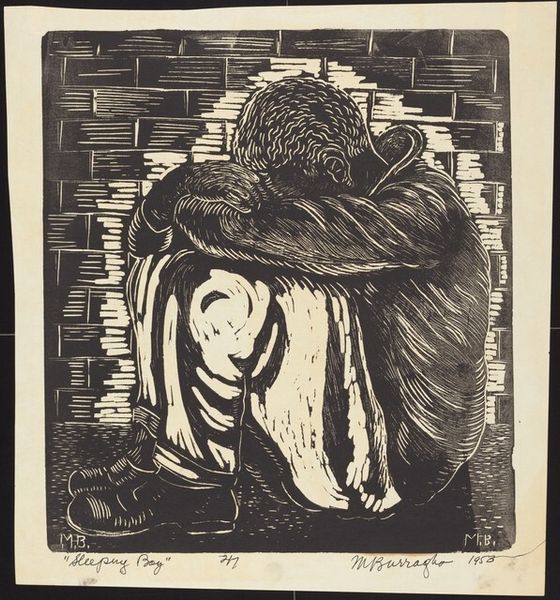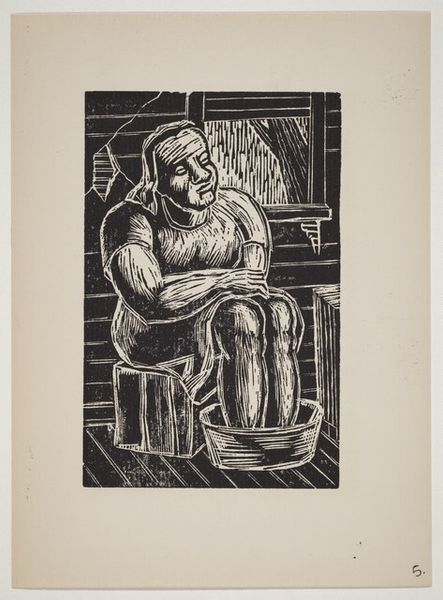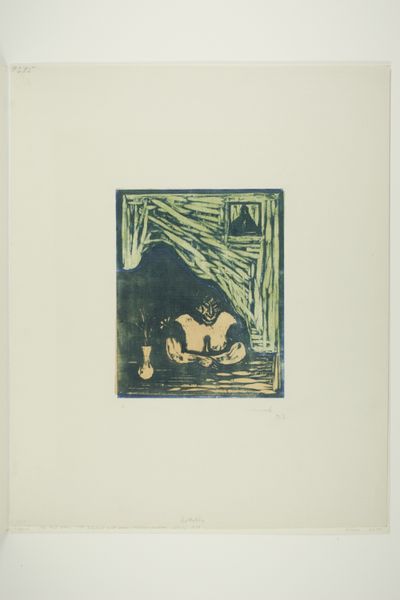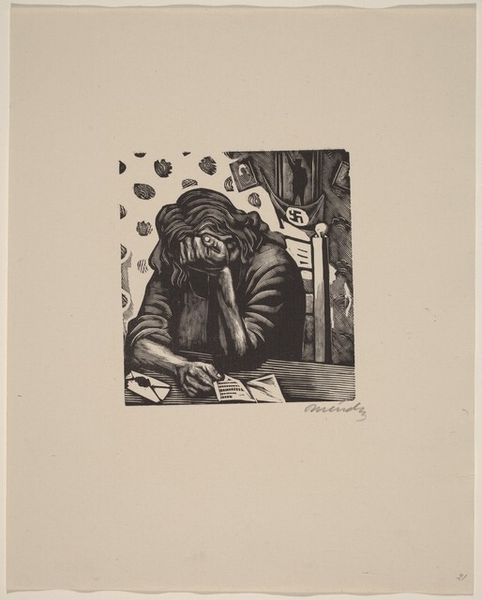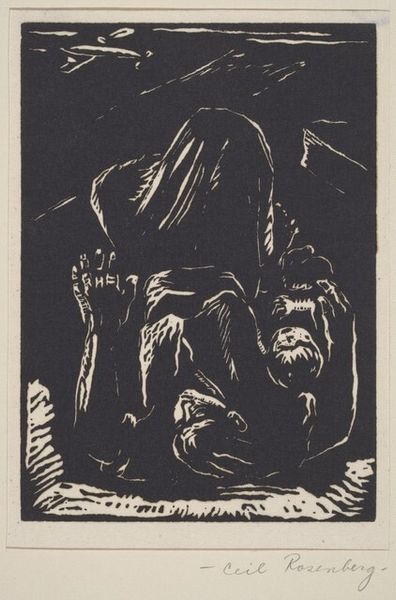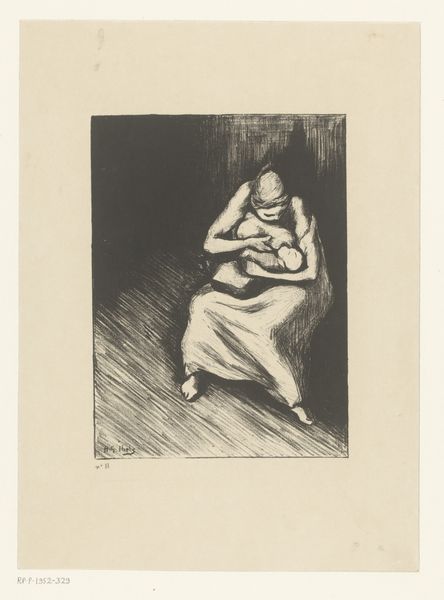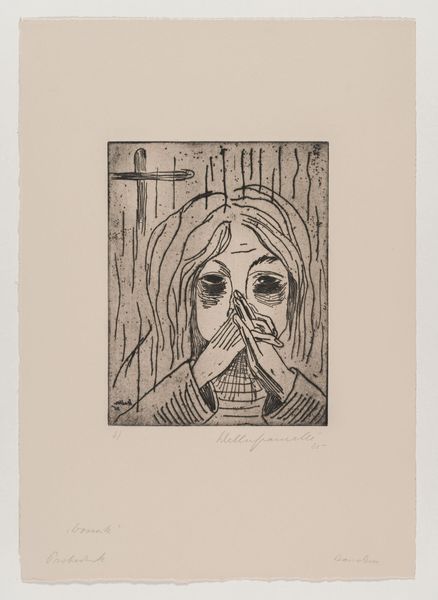
Dimensions: Image: 152 x 103 mm Sheet: 215 x 159 mm
Copyright: National Gallery of Art: CC0 1.0
Editor: Here we have Leona Pierce Frasconi's "Sand Pail," a linocut print from 1950. It's a striking image, isn't it? The strong contrast of black and white gives it a powerful, almost stark quality, and there’s a lot of emotional intensity concentrated on the person featured. What do you see in this piece? Curator: Well, beyond the technical mastery of the linocut—the sharp lines, the clever use of negative space—I see a glimpse into childhood imagination. That sand pail with the tiny fish in it... it's like a miniature world, isn't it? The subject looks totally absorbed, completely lost in their private universe. Editor: Yes, and something about the figure, cloaked, hooded and crouched feels isolating. What do you make of that? Curator: Indeed. Notice the high contrast between the brightly illuminated subject versus the densely dark brickwork background— the world feels closed off behind them. The person, caught in an act of imagination, is shielded from something looming and imposing, but whether that looming thing is reality or a social obstacle isn't as obvious. Is that intentional or am I imposing myself on it? I am reminded of times from my youth. What do *you* make of it? Editor: I think you're right, there's definitely a sense of retreat, of creating a safe space within the larger world. The title also highlights what should be childlike and everyday-- "Sand Pail," something one might see on a beach-- rendered with great complexity of the mind. I hadn’t quite seen that before. Curator: Art reveals itself bit by bit like that, and we, the observers, evolve along with the observation. That makes experiencing art feel intensely human. Editor: Exactly! Thank you so much for your insights. I have a new perspective on the piece, and I think our listeners will, too.
Comments
No comments
Be the first to comment and join the conversation on the ultimate creative platform.
